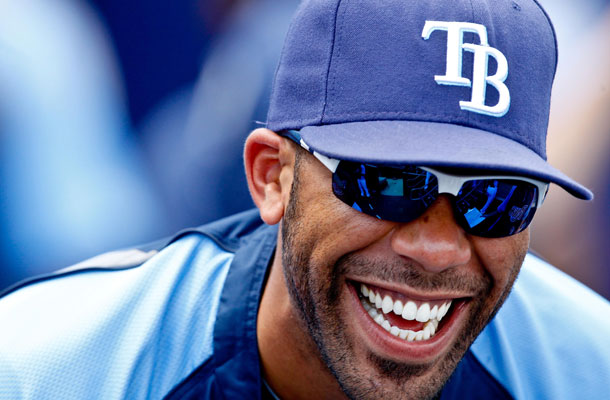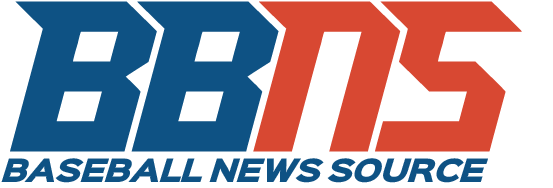 The buzz swirling around Masahiro Tanaka is currently dominating the hot stove. Accordingly, the David Price trade rumors have taken a back seat. Still, the Tampa Bay Rays have a pretty big incentive to move their ace pitcher, who will likely command close to $15 million in arbitration. While the Rays would love to retain Price long-term, both parties know they can’t afford each other.
The buzz swirling around Masahiro Tanaka is currently dominating the hot stove. Accordingly, the David Price trade rumors have taken a back seat. Still, the Tampa Bay Rays have a pretty big incentive to move their ace pitcher, who will likely command close to $15 million in arbitration. While the Rays would love to retain Price long-term, both parties know they can’t afford each other.
Since becoming a starter in 2009, Price has been one of the best pitchers in the major leagues. His ERA- of 82 is 9th best, and he’s managed strikeout and walk rates of 22.1 percent and 7.2 percent, respectively. Price is 15th in fWAR and 13th in RA-9 WAR.
Over the last three years, Price has mastered his control, allowing him to be even better. Since 2011, Price is 8th in both fWAR and RA-9 WAR with strikeout and walk rates of 23.0 percent and 6.0 percent. In his CY Young 2012 season, he took his fastball to new levels and produced 7.0 RA-9 WAR. Among qualified pitchers, only Cliff Lee and Adam Wainwright could match the 3.7 percent walk rate he posted in 2013. In addition, Price is a well-respected clubhouse presence.
| System | Innings | K/9 | BB/9 | ERA | fWAR |
|---|---|---|---|---|---|
| Steamer | 192 | 8.0 | 2.3 | 3.42 | 3.8 |
| Oliver | 200 | 8.1 | 2.0 | 2.88 | 4.5 |
| ZiPS | 198 | 8.6 | 2.1 | 3.09 | 4.3 |
All three systems believe Price will continue being the durable ace pitcher he has been. Even with an arbitration payout around $15 million, Price would be able to give a team plenty of bang for the buck.
However, pitchers always represent a health risk, and there are concerns surrounding Price. First of all, he spent six weeks on the DL this year with a triceps strain. His fastball velocity dropped a full two miles per hour, down from 95.5 to 93.5. In 2012, he threw 264 fastballs that traveled at least 97 miles per hour. He didn’t throw any fastballs at that speed in 2013.
Furthermore, his swinging strike has declined in recent years, while he’s allowed more contact, particularly on pitches in the strike zone.
| Year | SwStr% | Contact% | Zone-Contact% |
|---|---|---|---|
| 2010 | 9.8 | 79.1 | 83.9 |
| 2011 | 8.4 | 80.8 | 85.2 |
| 2012 | 8.3 | 80.5 | 86.6 |
| 2013 | 7.9 | 83.0 | 88.8 |
Price’s 2013 contact rate is sandwiched between Miguel Gonzalez and Scott Feldman, hardly ace pitchers. Of course, this may have been a strategic decision by Price. Since returning from the DL in July, he walked just 13 hitters in 116.2 innings. Overall in 2013 Price threw a career-high 68 percent first-pitch strikes, and his K/BB ratio of 5.6 was the 4th best mark in baseball.
Despite a swinging strike rate that was below the major league average, Price had a better than average strikeout rate. For his career, 38 percent of Price’s strikeouts have been of the looking variety, compared to the major league average of 25 percent. In 2013, that number rose to 44 percent. With a new team, Price won’t be throwing to pitch-framing genius Jose Molina, so his strikeout numbers may drop off if he can’t miss more bats.
It’s not unprecedented for a flamethrowing pitcher to lose velocity and continue to be both durable and dominant. Felix Hernandez has steadily lost velocity, yet he’s thrown over 200 innings each of the last six seasons, while averaging over 5 fWAR per season. He’s done so in large part by improving command of his secondary pitches and trimming his walks. Increased usage of an improved changeup suggests that Price may be able to move in this direction as he ages. While continued success in the face of velocity loss is the exception, it can be done, and at this point Price has more velocity than King Felix.
All that being said, what kind of return should Price command if the Rays decide to move him?
First of all, getting a similar return to what James Shields brought last offseason is highly unlikely. While Price is a better pitcher, that trade is best seen as a massive overpay rather than a market setter. On the other hand, the Doug Fister return is much too low. Understandably, the Rays would like major league-ready talent to recoup some of the short-term value they would lose by parting ways with Price.
However, teams that have been linked to Price, such as the Seattle Mariners, Washington Nationals, and Pittsburgh Pirates, are not readily inclined to give up top line talent. While names such as Taijuan Walker, Anthony Rendon and Gregory Polanco have been tossed around, they are not likely to be dealt away. Giving up a controllable player who is major league ready and could develop into a star for two expensive (albeit much less than market rate) arbitration years of an ace pitcher is foolish.
Unless a General Manager gets desperate, the Rays will probably have to settle for younger, less-ready prospects if they want top of the line talent. A trade package with the Los Angeles Dodgers centered around Corey Seager is possible. The Chicago Cubs and Houston Astros have a bevy of young prospects. However, the teams might not want to short-circuit their rebuilding plans if they do not feel they can contend within the next couple of seasons.
In any case, if the Rays and General Manager Andrew Friedman don’t feel that they are getting an adequate offer, they can hang on to Price for at least another year. While his trade value would drop significantly with the loss of a year of team control, it would give the Rays the best shot of contending for the AL East title this season.
